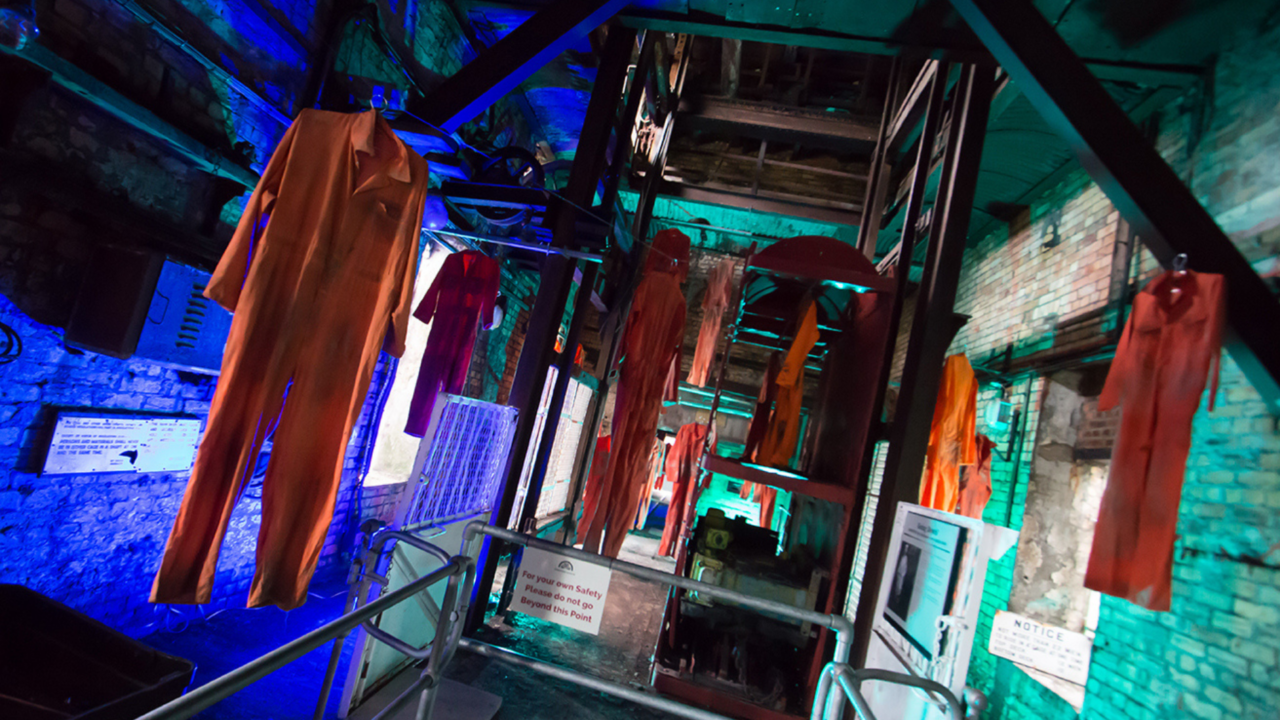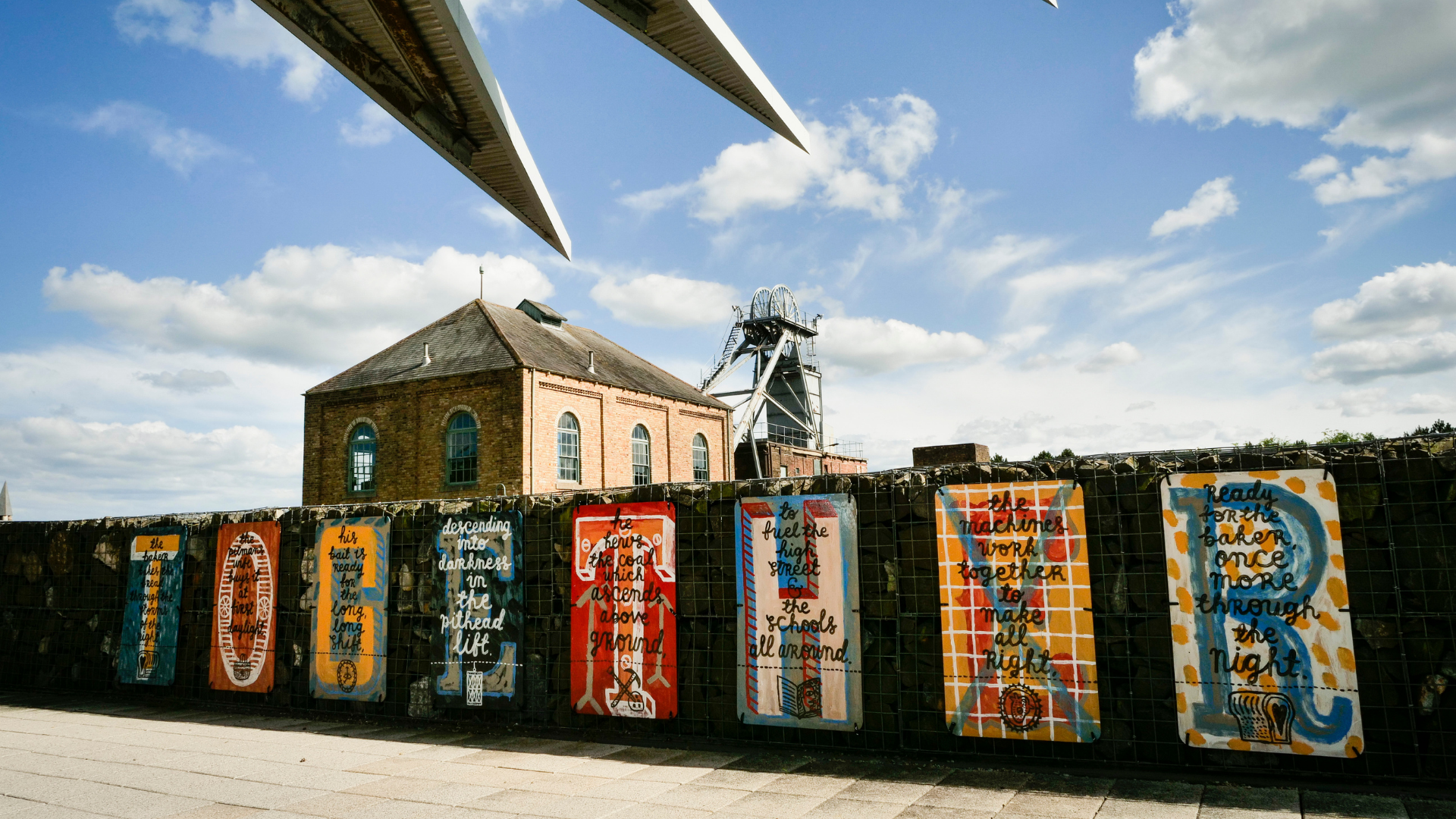- Posted on April 5th, 2022
Woodhorn Charitable Trust – STEM heritage

Museums Northumberland – Woodhorn Charitable Trust
As a rural county, with a proud industrial past, it isn’t hard to see the visible impact of environmental change at every juncture. We have monuments to industry and ingenuity in our care ranging from a scheduled ancient monument nineteenth century colliery complex (once part of the largest Pit Village in the world), to the Berwickshire Naturalists Club’s near 200-year-old collection, which documents the changing environment of Berwickshire and beyond.
Through all-encompassing STEM-themed activity, the Woodhorn Charitable Trust has established a passionate networked community informed and enthused by environmental topics, knowledgeable about the diversity of skills that are required for STEM careers and anchored and inspired by our proud STEM heritage. We’re also very aware that we cannot fulfil the duties of an accredited museum service – to preserve our collections for posterity – if we don’t achieve a balance between our activities and our environmental impact.
Working with a broad array of partners from academia to contemporary dance, we’re exploring environmental stories and transforming the quality and diversity of the educational resources and audience experiences we can offer. At the same time, we’ve reduced our dependency on fossil fuels, increased our use of local suppliers and we’re supporting the adaptation of our scheduled ancient monuments to increase support our dwindling swift population.
We’re building on solid foundations admittedly – Woodhorn Museum has twice been a recipient of the Green Tourism Award and has long-participated in wildlife protection across our sites. As early adopters of the ‘Happy Museum’ methodology, we’ve been developing this practice steadily since 2013/14. Attaining ACE NPO status in 2018/19 allowed us to explore environmental topics through programme and partnership.
Arts Installations
Our 2018/19 winter season, Coal Forest, explored the legacy of prehistoric carboniferous forests through contemporary arts installations including Nick Crowe and Iain Rawlinson’s 2015 Song for Coal (which was based on the 1898 Coal Catechism, composed the same year our coal mine doubled its output), and Kelly Richardson’s haunting Twilight Avenger, featuring an unearthly stag glowing in an imagined forest.
That season also hosted Bethan Maddock’s recreated paper carboniferous forest installation, which our communities added to over the season. In our December 2019/20 winter season, we featured a number of theatrical vignettes exploring the colliery’s near hundred years of operation, which culminated in a contemporary dance performance choreographed by David Lloyd on the subject of energy future.
Reducing fossil fuel consumption
Achieving fossil fuel reduction has been done through incremental, logical steps, guided by our incredible advisers, Elemental Solutions Ltd., and WS Controls. Simple acts such as monitoring light levels and, where safely possible, removing additional lighting (we’ve removed 50% of our strip lights now) and replacing life-expired units with LEDs have made an enormous difference.
We have committed to reducing CO2e year on year, adopting passive storage and recycling 80% of our waste with incredible results (though admittedly, the pandemic contributed):
- Berwick Museum & Art Gallery – 2.6 tonnes CO2e (38 tonnes CO2e in 19/20)
- Hexham Old Gaol – 10.2 tonnes CO2e (64tonnes CO2e in 19/20)
- Hexham Moot Hall – 14.6 tonnes CO2e (40 tonnes CO2e in 19/20)
- Woodhorn Museum – 157.1 tonnes CO2e (348 tonnes CO2e in 19/20)
Quite simply, our museological duty of care, combined with the very real pressures of 90%+ increases in energy prices, render reducing our environmental impact and, particularly, our energy consumption, a necessity, not a choice.

Protecting biodiversity
Preserving and protecting our local flora and fauna can also be relatively easily achieved. Our red squirrels are preserved through monitoring, reporting, trapping, and feeding, depending on population needs. Swifts can be supported through sustainable and discrete nesting boxes; the real battle is convincing the planners it’s a temporary intervention.
We are well endowed with nature, and our cross-departmental Green Team has worked hard to protect our red squirrels, birds of prey, and the heron who now attends our exhibition openings
STEM project
Through the auspices of our current Union Chain Bridge and Our Past Your Future projects, we’re exploring all things STEM past, present and future to inculcate a culture of STEM enthusiasm amongst our communities.
In partnership with NU STEM, we’re developing a network of STEM-confident teachers (acting as an action learning set), delivering renewable energy themed school assemblies and presenting STEM People of the Week– individuals from diverse backgrounds who can demystify what life is like as a climate engineer, or energy futures scientist.
These interventions are coupled with fun workshop activities such as using anemometers to measure wind speed or creating a basic turbine. The success of both programmes has been the anchoring of these stories in the context of our region’s energy heritage and future, giving younger generations tangible hooks to understand the impact of climate emergency.
Through our formal STEM education work, we’re using the world’s oldest vehicular chain bridge to inspire a new generation of STEM enthusiasts. We’ve created a community of STEM ambassadors, and we’re supporting schools and teachers on both sides of the border to embrace multidisciplinary STEM learning and develop a more nuanced perspective of STEM careers.
Through our interactive digital map of STEM heritage, we’re encouraging communities to celebrate our region’s STEM successes from the oldest manmade object yet found in the North East – the c. 10,000 BC Eltringham Flint, to the world’s most environmentally friendly paint factory created by Akzo Nobel in Ashington.
We’re encouraging communities and the wider public to add their trailblazers and monuments to present the rich and diverse stories that will inspire a more confident STEM future and create the workforce we will need to minimise our environmental impact.

Our team and partners
This body of work has been led by our cross-departmental Green Team and supported and informed by a vast array of community partners, corporate friends and creative practitioners. None of it would have been possible without the generosity of our funders – Northumberland County Council, Arts Council England, the National Heritage Lottery Fund and the North of Tyne Combined Authority – plus the ardent support of our Board.
We’ve been inspired by creative partnerships with Let’s Circus, The Greatest Rock Showman, November Club and Eliot Smith Dance, and a host of storytellers and performers too numerous to name.
We’ve been guided by Northumbria University’s NUSTEM, Julie’s Bicycle and our partners at Northumberland County Council, plus our corporate partners Akzo Nobel and Tharsus. We’ve also had great support and coverage through our local and national news and press channels, and most importantly, from our communities and audiences, who continue to engage with our environmental mission, and support this seismic change.
The culture of our organisation has always been rooted in the people and places that we serve, but the support of funders and partners has enabled us to be bolder in every aspect of our work. We’re telling stories about practical change and historic context through a variety of means and reaching wider audiences. We’re also radically changing our internal practise, utilising the Julie’s Bicycle tools and making the most of the corporate industrial partners in our midst.
The change has been significant, and the engagement unprecedented. With our Northumberland County and Scottish Borders partners, and the dedicated Friends of the Union Chain Bridge, our work achieved a Local Government Chronicle Award for partnership excellence. With isolated communities we’ve used nature photography and access to the great outdoors to improve wellbeing and combat loneliness and in a school in Northumberland we achieved the ‘Best Wednesday Ever’ through STEM engagement.
Header image credit: Colin Davidson, Woodhorn charitable trust
